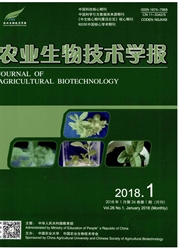

 中文摘要:
中文摘要:
在细胞和组织中,机体为了适应缺氧环境会诱导一些与红细胞生成/铁代谢、血管生成、葡萄糖代谢、细胞增殖/生存和凋亡相关等一系列基因的表达。缺氧诱导因子.1(hypoxia inducible facto HIF-1)作为一种氧敏感的转录激活因子,是参与缺氧反应的主要因子。HIF-1是由HIF-1α和HIF-1β两个亚基组成的异源二聚体,参与维持体内氧气和能量平衡。HIF-1α亚基对氧气敏感,在正常细胞中,可通过脯氨酸羟化酶和泛素蛋白酶体将其降解;而HIF-1β亚基在细胞内稳定表达。虽然对于缺氧反应中HIF-1基因的表达已有一些研究,但在水生动物(鱼类和无脊椎动物)中,HIF-1表达的分子调控机制所知甚少。本文主要概述了HIF-1的结构与功能,O2/PHDs/pVHL降解途径及其表达调控,HIF-1的靶基因及其在水生动物中的研究进展,可望为今后水生动物HIF-1信号通路的研究提供参考。
 英文摘要:
英文摘要:
With the increase of human population density in coastal areas, the anthropogenic input of nutrients and organic matter into coastal waters has resulted in hypoxic events of increasing magnitude, frequency, and duration. Adaptation to hypoxia in cells and tissues leads to the transcriptional induction of a series of genes that participate in erythropoiesis/iron metabolism, angiogenesis, glucose metabolism, cell proliferation/survival and apoptosis. The primary factor mediating this response is the hypoxia-inducible factor-1 (HIF-1): an oxygen-sensitive transcriptional activator. HIF-1 is a dimeric transcriptional complex comprising a HIF-α subunit and a HIF-β (also called the aryl hydrocarbon receptor nuclear translocator, or ARNT) subunit, both of which are members of the basic helix - loop - helix/Per-Arnt-Sim (bHLH/PAS) proteins that are characterized for containing bHLH and PAS conserved domains. They have been recognized primarily for its role in the maintenance of oxygen and energy homoeostasis. The HIF-1 et acts as the important regulator of the expression of some genes in response to hypoxia. At the same time, the HIF- 1 et subunit is O2 labile and is degraded by the proteasome following prolyl-hydroxylation and ubiquitination in normoxic cells. Stability of HIF-1α protein is primarily regulated via an oxygen dependent degradation domain (ODDD) while its transcriptional activity is facilitated via two transactivation domains (N-TAD and C-TAD). These TADs, besides being essential for interaction with transcriptional co-activators such as CBP/p300, are targets for regulation via post-translational modifications such as phosphorylation, acetylation and redox modifications. Under hypoxic conditions, HIF-la accumulates and forms a heterodimeric DNA-binding complex with HIF-1 [3, and binds to the hypoxia response element (HRE): 5'-RCGTG-3' on the promoter region of target genes. However, HIF- 113 subunit is constitutively expressed in cells. HIF- 113 is an obligate dimerizati
 同期刊论文项目
同期刊论文项目
 同项目期刊论文
同项目期刊论文
 Molecular cloning, characterization and expression analysis of three heat shock responsive genes fro
Molecular cloning, characterization and expression analysis of three heat shock responsive genes fro IGFBP7 promotes hemocyte proliferation in small abalone Haliotis diversicolor, proved by dsRNA and c
IGFBP7 promotes hemocyte proliferation in small abalone Haliotis diversicolor, proved by dsRNA and c Identification and expression analysis of immune-related genes linked to Rel/NF-κB signaling pathway
Identification and expression analysis of immune-related genes linked to Rel/NF-κB signaling pathway Cloning, characterization, hypoxia and heat shock response of hypoxia inducible factor-1 (HIF-1) fro
Cloning, characterization, hypoxia and heat shock response of hypoxia inducible factor-1 (HIF-1) fro 期刊信息
期刊信息
